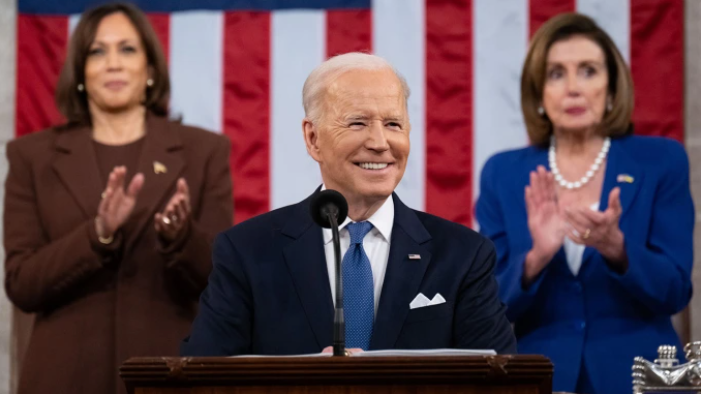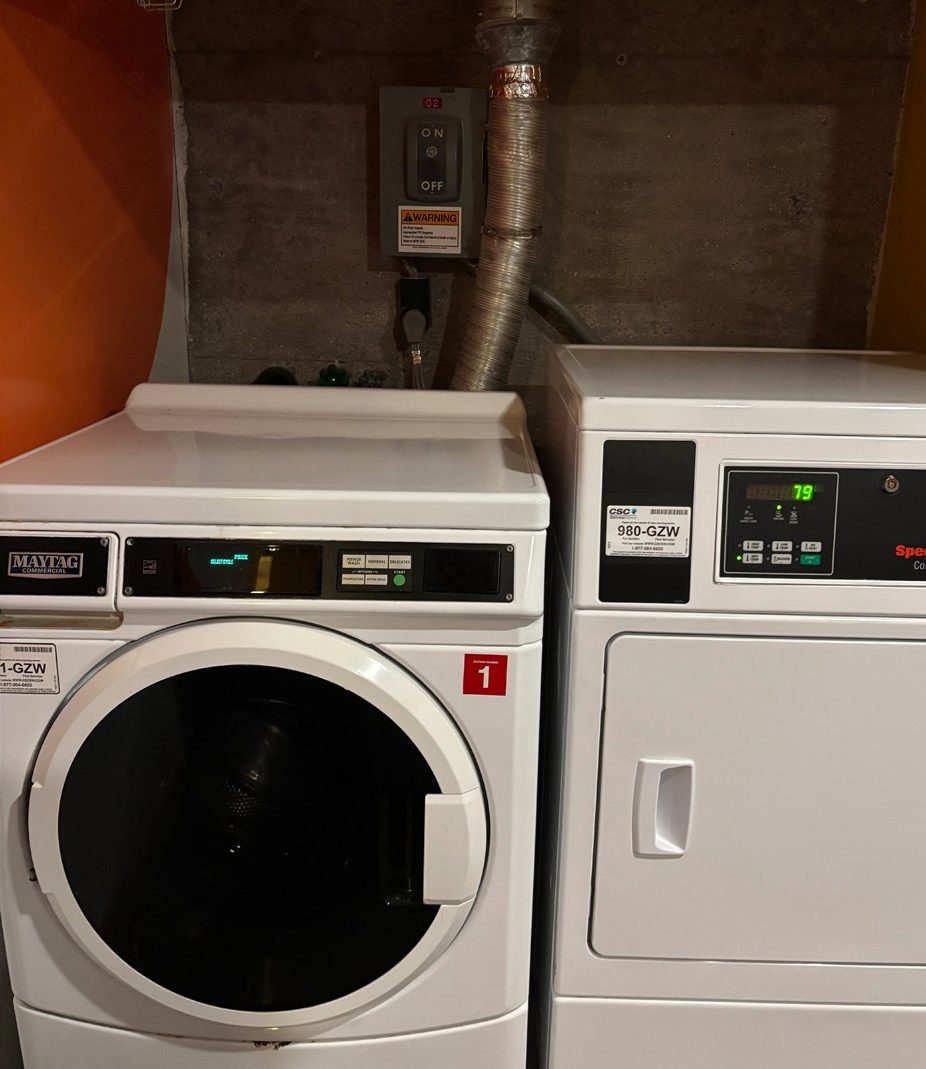
Joe Biden must have been aware of the perilous stakes involved when approaching the lectern on March 1, preparing to deliver his first State of the Union address. The highly anticipated speech, a tool by which presidents have attempted to utilize the bully pulpit for over a century, had generated a considerable amount of speculation due to his precarious position; even the most steadfast Bidenite would agree that the executive’s general opinion polling numbers have been lacking. While such polls are frequently poor indicators of policies’ efficacy, their electoral implications for Biden and his Democratic Party have loomed over his every action for several months.
A flawed State of the Union speech can easily backfire; just ask Jimmy Carter about the fallout from his catastrophic ‘crisis of confidence’ remarks. The rapidly accelerating war in Ukraine likely presented an additional wrench in the works for Biden and his speechwriters, forestalling the ‘pivot to Asia’ toward which American foreign policy has aspired for the past decade and forcing major rewrites to a speech that had likely been in the works for months.
Then Biden ascended the podium, appearing as intact as ever, and delivered an address of extraordinary magnitude.
Biden agitated from the commencement of his speech, keen to secure an undivided front in defiance of foreign aggression. As horrific as the invasion of Ukraine is, the reemergence of a common foe in Russia against which Americans can join forces is a veritable godsend for a president who has often rooted his political messaging in themes of unity. This is not, of course, to suggest that such a task is trivial. Galvanizing the nation in the face of Vladimir Putin’s irredentist fantasy enough to heal the open wounds of American partisanism, just for a moment, would require both a spirited show of resistance and a firm hand on the tiller. Biden brought both in spades, dispelling any serious doubts about his capabilities as commander-in-chief and subtly drawing attention to his own masterful handling of the conflict in coordination with NATO. Precious few State of the Union openers can even get close to bringing every member of Congress to their feet, but this initial segment compelled even the president’s staunchest opponents to stand in defiance of the ongoing Russian invasion.
One of Biden’s most prominent fortes is his sincerity, a quality he let shine throughout his performance; indeed, his appeals against the invasion in particular were grounded not in off-putting
realpolitik
, but rather in common values of humanity. Oksana Markarova’s presence at the address was all but natural amidst the compassion for Ukraine that Biden conveyed, a pattern that continued throughout the speech; none of his other Lenny Skutniks appeared to be shoehorned into the address either, instead flowing artlessly as the president pivoted to navigating his domestic agenda.
Biden addressed the numerous lingering complications of his presidency adroitly and efficiently, skillfully highlighting the empathetic motivations behind many of his policy proposals. He acknowledged the boogeyman of inflation that has haunted his administration for months on end, and while the strategic reserves he plans to release will only blunt rising oil prices, the gesture alone indicated the Biden administration’s commitment to recognizing and alleviating the plights of common Americans. Basking in the light of his dawning ‘infrastructure decade,’ he expounded upon the benefits of last year’s massive bipartisan infrastructure package, elucidating its long-term benefits and relating them to those mired in short-term struggles. While he announced initiatives to tackle addiction and prescription drug costs, pushed for expanded pre-K support and the Child Tax Credit and heralded the return of watchdogs to oversee price gouging, his compassionate delivery brought conviction to the platitudes that sound phony in the mouths of populists past and present.
In order to placate and reassure increasingly disenchanted independents, the president had to abandon his previous reticence to concede that various aspects of his COVID-19 recovery project have not exactly proceeded according to plan. Biden knew full well that working-class America was souring on his vision of America, and he responded by staring the sword of Damocles down on national television; based on post-address polls, his gambit paid tremendous dividends. The president emerged unscathed and empowered.
Even the less tantalizing proposals Biden trotted out during the State of the Union contained their fair share of bright spots. The government’s continued flirtations with protectionism and reversions to domestic manufacturing, for example, are less than auspicious signs for future economic growth, but the massive Intel chip plant outside of Columbus has enough geopolitical value to validate the policy through the lens of national security. Germany is currently suffering for its decision to export energy, given the stranglehold Russia now holds over the pipelines that provide Central Europeans their heating oil; while Biden would do to reinforce American commitments to international trade a tad, his recognition that the U.S. cannot remain naïve to the prospect of foreign embargoes of vital manufactures is refreshing. Plus, considering the broad popularity of domestic manufacturing among the American people, a few plugs for ‘buying American’ in Biden’s messaging are well worth their opportunity cost.
In many respects, the Biden administration began in earnest on March 1; for the first time, the president had the latitude to enunciate his vision unshackled from the constraints of his party, and he seized the opportunity with both hands to set his agenda. He made no attempt to address or justify
post hoc
the more controversial decisions of his presidency, keeping discussion of the CDC’s COVID-19 regulations to a minimum and omitting the contentious Afghanistan withdrawal entirely. Nor did he tolerate the albatross of unpopular activist policies hanging about the neck of the Democratic Party, favoring an approach to shore up public support by unequivocally aligning his own priorities with those of actual Americans in need, not merely their self-appointed spokespersons. Even as he reverted to playing some of the old Democratic hits by the end of his speech, he managed to communicate his support for the poor and unaccepted without subsuming his own ideas to the party line. Without sacrificing time to enunciate his civil rights concerns, he gave veterans affairs and immigration reform the focus they deserve in the eyes of many Americans. Simplicity and necessity undergirded many of Biden’s priorities, making his motivations approachable to common people; for example, his steadfast support for online privacy and mental health legislation likely helped reaffirm to otherwise skeptical American parents that his administration does, in fact, care a whole lot about children.
Unmoored from the yoke of opprobrium, yet flush with sympathy and support for the disenchanted and disenfranchised, Biden wielded the bully pulpit with a remarkable effectiveness unparalleled in his administration thus far. Granted, all but the most astonishing speeches have their share of blemishes, and this State of the Union did not quite prove itself the exception. Biden disappointingly omitted any sort of commitment to nuclear power in his renewable energy overtures and specified no mechanism to tie his proposed minimum wage to purchasing power. In the grand scheme of his address, however, these oversights are slight. When he needed a phenomenal speech more than ever, Biden delivered on the House floor, giving millions of Americans renewed hope that he might transfer that furious momentum to the nation.
























